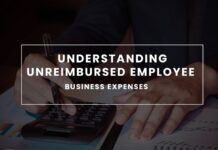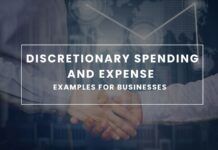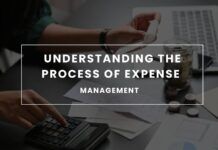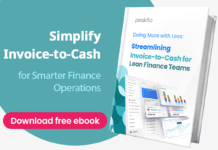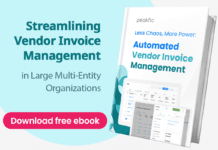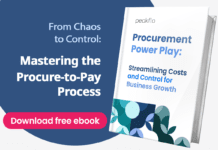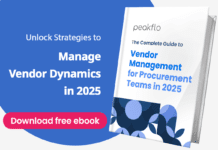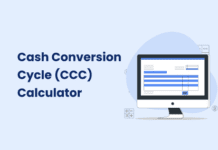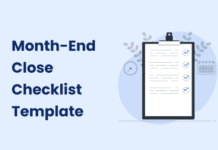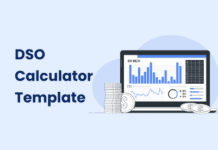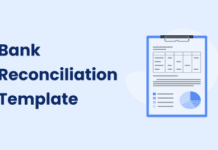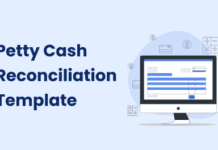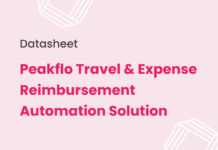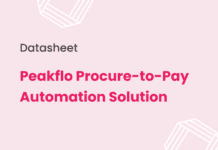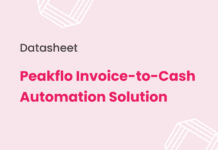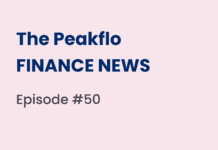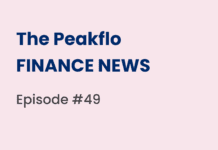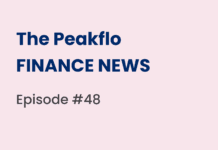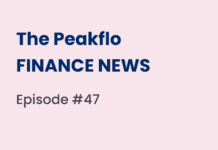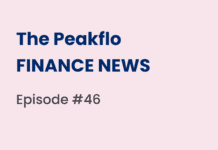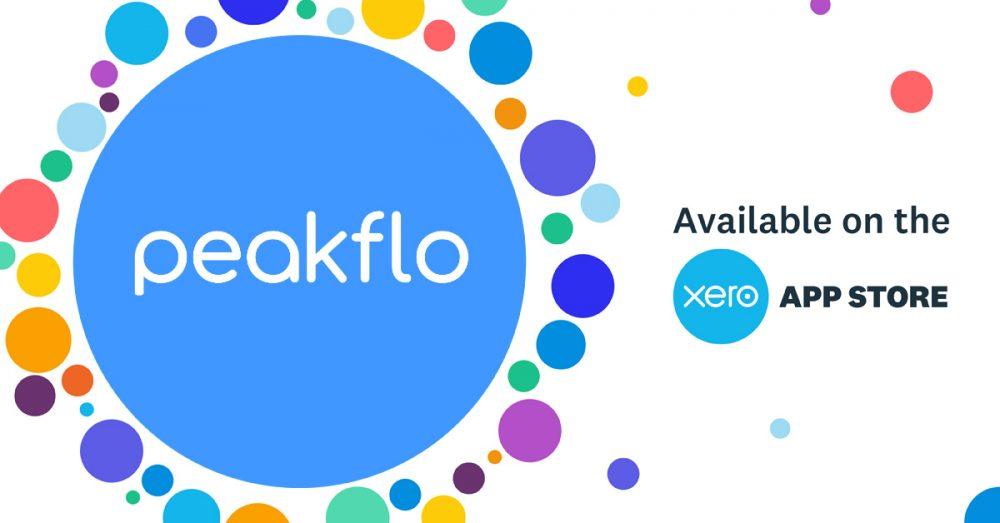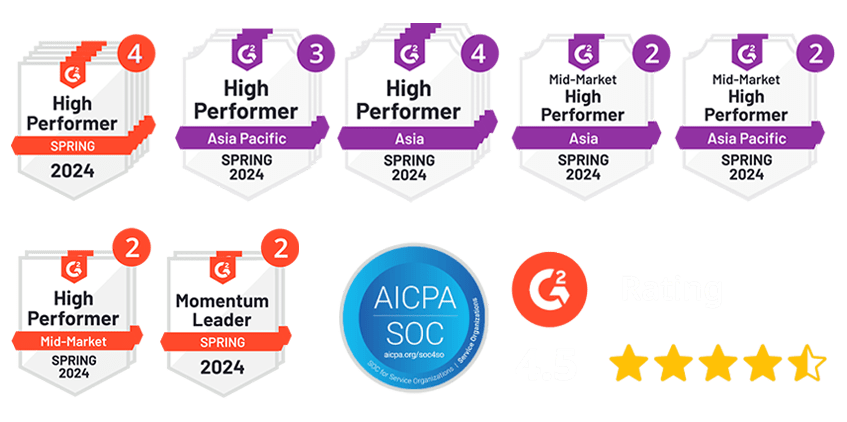Managing expenses can get tricky for large businesses. With so many vendors, changing costs, and strict rules to follow, even small mistakes can cause big problems. Understanding accounting expenses is not just about tracking costs—it is about keeping your business steady and making smarter choices.
From fixed expenses like rent to variable ones like raw materials, knowing how to categorize and record costs is key. It helps you plan budgets, avoid unnecessary spending, and stay compliant with regulations. Accurate expense tracking also improves vendor relationships and builds trust with customers.
In this blog, we will break down what accounting expenses are, the different types you’ll deal with, and real examples to make things clear. If managing business costs feels overwhelming, do not worry. You will learn how to handle them with ease.
What is an Accounting Expense?
An accounting expense is a business’s cost to keep things running and earn revenue. These expenses include everything from rent and salaries to materials and utility bills. By tracking these costs, businesses can understand how much they are spending and identify ways to improve their financial health.
For example, suppose you run a furniture company. To build your products, you need wood, fabric, and tools. You also pay your employees to assemble the furniture and cover the cost of electricity to power the machinery. All these are accounting expenses—the money you spend to keep the business operating and producing goods. If these costs are not tracked correctly, it is hard to know if you are making a profit.
By understanding and recording expenses like these, businesses can set better budgets, control unnecessary spending, and plan for growth. It is not just about numbers; it is about making sure every dollar is working for you.
Types of Accounting Expenses
Accounting expenses come in many forms, and understanding these categories helps businesses track spending, plan budgets, and make better financial decisions. Below, we will break down each type, along with simple examples to make them easier to understand.
1. Fixed Expenses
Fixed expenses remain the same, regardless of how much a business produces or sells. These are predictable and help with long-term financial planning.
Example: A software company pays $10,000 monthly for its office lease. This expense stays constant whether the team lands one project or ten.
2. Variable Expenses
Variable expenses fluctuate depending on the level of production or sales. These costs rise or fall as business activity changes.
Example: A bakery spends $2 on packaging for every box of cupcakes sold. If they sell 1,000 boxes monthly, the cost will be $2,000. Fewer sales mean lower packaging costs.
3. Operating Expenses
Operating expenses are the costs of keeping the business running daily. They include things like salaries, marketing, and utilities.
Example: A retail store spends $5,000 monthly on advertising and $2,000 on electricity to power its lights and cooling systems. These are necessary to keep the business functional.
4. Non-Operating Expenses
Non-operating expenses are costs that do not arise from a business’s core activities. These might include loan interest, currency exchange losses, or one-time legal settlements.
Example: A manufacturing company pays $4,000 in interest on a loan to buy new equipment. Since this is not tied to making or selling products, it is classified as a non-operating expense.
5. Direct Expenses
Direct expenses are costs tied to creating a specific product or service. These expenses would not exist without that product or service.
Example: A furniture business spends $30 on materials and $10 on labor for each chair it produces. These costs are directly linked to making the chairs.
6. Indirect Expenses
Indirect expenses are not linked to a single product but are necessary for the overall functioning of the business.
Example: A company pays $1,200 a month for office internet. The cost supports the entire team but is not directly tied to any product or service.
7. Accrued Expenses
Accrued expenses are costs a business has incurred but has not yet paid. These are recorded in the books to reflect the financial state, even if the payment is made later.
Example: A large enterprise uses electricity throughout January but receives the utility bill in February. Although the payment has not been made, the expense for January is recorded to ensure accurate reporting.
How Are Expenses Recorded?
Recording expenses is an essential part of managing a business. It helps track where money is spent and ensures accurate financial records. The process is straightforward when broken into simple steps. Here is how it works:
1. Identify the Expense
The first step is to determine the expense and why it occurred. This could be a payment for rent, an electricity bill, or a purchase of materials. Every expense should be linked to a purpose to be recorded properly.
Example: A company spends $500 on office supplies. This is an expense for daily operations and falls under the “Office Supplies” category.
2. Match the Expense to the Right Time
Expenses must be recorded in the period when they happen, even if the payment is made later. This is called the accrual basis of accounting. It ensures the records reflect the real financial situation.
Example: A business uses electricity in January but gets the bill in February. The expense is recorded in January because that is when the service was used.
3. Categorize the Expense
After identifying the expense, it needs to be categorized. Categories help organize expenses and make reports easier to understand. Common categories include rent, utilities, payroll, or marketing.
Example: A company spends $1,200 on social media ads. This expense is categorized under “Marketing Costs” to separate it from other types of spending.
4. Enter the Expense in the System
Once categorized, expenses are recorded in the accounting system. Most businesses use software to do this quickly. The expense is entered as a debit in the relevant expense account and a credit in cash or accounts payable.
Example: A vendor sends an invoice for $3,000. The company records $3,000 under “Cost of Goods Sold” and adds $3,000 under “Accounts Payable” if it has not been paid yet.
5. Save Supporting Documents
Every expense should have proof, like a receipt, invoice, or contract. These documents are saved for accuracy and compliance. They also help during audits or if questions about the expense arise later.
Example: A business buys equipment and keeps the invoice in its records. This way, they can show proof of the purchase whenever needed.
6. Review and Reconcile
At the end of each period, businesses check their records to ensure every expense is accurate. This is called reconciliation. It involves comparing the accounting entries with bank statements and other documents. Reconciliation helps catch errors and prevent financial mistakes.
Example: A company finds a $200 charge for office supplies on its bank statement that was not recorded. It adds it to its accounting system to ensure the records match.
Examples of Common Accounting Expenses
Businesses spend money on many things to keep operations running smoothly. These expenses are necessary for both daily tasks and long-term success. Here are some of the most common accounting expenses and why they matter:
- Salaries
Salaries are often one of the largest costs for any business. They include employee payments for their work, whether it is someone helping customers directly or managing operations behind the scenes. For example, a marketing agency pays $100,000 every month to its designers, writers, and managers. This expense is essential because, without these employees, the agency couldn’t deliver its projects or grow its business.
- Rent
Rent is businesses’ cost to use office space, retail stores, or warehouses. It is a fixed expense that doesn’t change month to month, making it easier to plan for. For instance, a retail store in New York might spend $20,000 a month on rent to stay in a prime location. This cost ensures the store is accessible to customers and can continue generating sales.
- Utilities
Utilities cover essential services like electricity, water, and internet. While these might seem like smaller costs, they are critical for keeping the business functional. Take a manufacturing company as an example. It spends $5,000 on electricity each month to power its machines and another $1,000 on water for cooling and cleaning. Without utilities, production would stop entirely.
- Advertising
Advertising helps businesses reach new customers and stay competitive in the market. It includes costs for online ads, billboards, and even TV commercials. For instance, an e-commerce store might spend $10,000 on social media ads during a holiday sale. This expense is not just about spending—it is an investment to attract customers and boost sales.
- Office Supplies
Office supplies are smaller but essential expenses that keep daily operations running. These include things like paper, pens, and printers. For example, a law firm might spend $500 monthly on paper and toner to prepare contracts and legal documents. While it may not seem significant, these supplies are crucial for the firm’s work.
Difference Between Expenses and Capital Expenditures
Expenses and capital expenditures (CapEx) are two important parts of business spending. They both involve money going out, but they serve very different purposes. Knowing the difference helps businesses keep their finances accurate and plan better for the future. Let’s break it down.
What Are Expenses?
Expenses are costs businesses pay to handle daily operations. These include things like rent, salaries, and office supplies. They are short-term costs and are recorded in the income statement for the period they happen. Expenses reduce profits right away.
For example, a company paying $8,000 for monthly rent or $1,500 for utility bills is recording an expense. These costs keep the business running but only benefit the company in the current period.
What Are Capital Expenditures (CapEx)?
Capital expenditures are different because they involve spending money on long-term investments. These are costs for assets like buildings, machinery, or vehicles that help the business grow or operate more efficiently over time. CapEx is recorded on the balance sheet as an asset and is spread over several years through depreciation or amortization.
For example, if a company spends $40,000 to buy new equipment for a factory, it’s considered CapEx. The equipment will benefit the business for years, so the cost is gradually spread out instead of being recorded all at once.
Here is a simple comparison to help understand how expenses and CapEx differ:
| Aspect | Expenses | Capital Expenditures (CapEx) |
| Definition | Costs for daily business operations. | Costs for long-term investments in assets. |
| Purpose | To run the business day to day. | To acquire or improve assets for future use. |
| Examples | Rent, utilities, advertising, and office supplies. | Buying vehicles, upgrading buildings, or installing new equipment. |
| Financial Statement | Recorded in the income statement as a current expense. | Recorded on the balance sheet as an asset and depreciated over time. |
| Timeframe | Benefits the business immediately. | Benefits the business over several years. |
| Tax Treatment | Fully deducted in the year they occur. | Deducted gradually through depreciation or amortization. |
Understanding the difference between expenses and CapEx is important for managing money. Here is why it matters:
- Clear Financial Reports: Expenses are recorded in the income statement, and profits are reduced immediately. CapEx, however, goes on the balance sheet as an asset. Its cost is spread over time through depreciation. If you mix them up, your financial reports may become inaccurate.
- Better Budget Planning: Expenses are regular short-term costs, like rent or salaries. These are easy to plan for monthly or yearly. CapEx, like purchasing machinery or upgrading a building, is a bigger one-time cost. It needs long-term planning to make sure the business can afford it.
- Tax Benefits: Expenses lower taxes in the year they happen, giving immediate savings. CapEx spreads out tax savings over several years through depreciation.
The Significance of Accurate Expense Forecasting
Forecasting expenses helps businesses stay financially secure. It means predicting future costs and preparing for them in advance. This is important for avoiding financial stress and making better decisions.
- Prevents Cash Flow Issues
When businesses forecast accurately, they always know how much money to set aside for expenses like rent and salaries. For example, if a company knows its utility bills rise in winter, it can plan to avoid running short on cash.
- Improves Budget Planning
Expense forecasting helps businesses allocate their money wisely. For example, if advertising costs are expected to increase during a product launch, companies can cut back on less important areas to keep spending under control.
- Supports Long-Term Growth
Forecasting isn’t just about the next month or quarter—it’s about looking ahead. A company planning to expand its team or open new locations can predict expenses like salaries and rent. This ensures growth happens without financial strain.
Best Practices in Expense Accounting
Managing expenses the right way is important for keeping a business stable. It helps avoid mistakes, stay within the law, and make better financial decisions. Here are the best practices every business should follow for proper expense accounting:
1. Organize Your Chart of Accounts
A chart of accounts is a tool to categorize and track expenses. Each expense type, like rent, salaries, or utilities, should have its category. A clear structure makes it easy to see where money is being spent and to create accurate financial reports.
2. Use Software to Manage Expenses
Relying on manual tracking can lead to mistakes and wasted time. Expense management software simplifies this process. It automates tasks like entering expenses, tracks spending in real-time, and connects with accounting tools. This keeps data accurate and saves time.
3. Record Expenses Without Delays
Expenses should be recorded as soon as they happen. Delaying this step can lead to errors in financial reports and cash flow issues. Keeping records up to date ensures the business has an accurate picture of its financial position.
4. Set Clear Rules for Expenses
Every business should have clear rules about handling expenses. These rules should explain which costs can be reimbursed, how much can be spent, and who approves spending. Clear policies prevent confusion and ensure everyone follows the same standards.
5. Reconcile Accounts Regularly
Reconciling means comparing your recorded expenses with bank statements and invoices. Doing this regularly helps catch mistakes, like duplicate entries or missing transactions. It also ensures that your financial data is always correct.
6. Review Expense Trends Often
Analyzing expense trends helps businesses see patterns in their spending. Regular reviews can show where money is being overspent or where there are chances to cut costs. This helps companies to adjust their budgets and control spending.
7. Follow Tax and Accounting Standards
Businesses must record expenses according to tax laws and accounting rules, like GAAP or IFRS. Properly classifying expenses ensures the company complies with regulations. Always save receipts, invoices, and other documents for audits and tax purposes.
8. Integrate Expenses with Your Budget
Expense tracking should be connected to the business budget. Compare actual spending to the budget to see if adjustments are needed. This helps businesses stay within their limits and make better financial decisions.
Why Peakflo Is the Best Solution for Accounting Expense Management?
Managing expenses can feel complicated, but Peakflo makes it simple. With powerful automation tools, Peakflo helps businesses save time, reduce errors, and stay in control of their finances. Here’s how its features make expense management easier and smarter:
End-to-End Accounts Payable Automation
Peakflo automates the entire accounts payable process, from procurement to payments and reconciliations.
- How it helps: It removes the need for manual data entry and keeps everything organized in one system. Your team can process invoices faster, approve payments easily, and reconcile accounts with less effort.
- Why it matters: By automating these steps, Peakflo ensures every transaction is recorded accurately, saving your team time and reducing errors.
Automated PO Matching
Peakflo automates the matching of invoices with purchase orders.
- How it helps: It quickly identifies overpayments, duplicate payments, and unauthorized transactions. This ensures only valid invoices are paid.
- Why it’s secure: Manual matching can lead to errors or fraud. With Peakflo, businesses can trust that every payment is correct.
AI-Powered Invoice OCR
Peakflo’s invoice OCR automatically extracts details from invoices and organizes them in your system.
- How it helps: Your team no longer needs to manually enter data. The system ensures every invoice is processed quickly and without mistakes.
- Why it’s efficient: This speeds up invoice management, allowing businesses to focus on more important tasks while keeping expense records accurate.
Smart Approval Workflow Automation
Peakflo automates expense approvals using flexible rules that adapt to any business process.
- How it helps: Complex approval workflows become simple and efficient. Expenses go through the right channels for review before payment.
- Why it’s reliable: With clear workflows in place, businesses can avoid delays and ensure all approvals are properly documented.
Payment and Reconciliation Automation
Peakflo automates payments and matches them with bank records for accurate reconciliation.
- How it helps: Payments are processed on time, and reconciliations are completed quickly. This keeps financial records accurate and reduces errors.
- Why it saves time: Your team spends less time on manual tasks and more time on strategic work, like budgeting or planning.
Budget Management Automation
Peakflo helps businesses create budgets and track expenses in real-time.
- How it helps: It monitors expenses against your budget, so you always know if spending is on track.
- Why it’s essential: Automated budget tracking helps businesses stay within limits and make better financial decisions.
Vendor Onboarding and Management
Peakflo simplifies onboarding by letting vendors securely upload and update their information.
- How it helps: All vendor details are verified and stored professionally, reducing errors and delays in payments.
- Why it’s smart: A clean, organized vendor database saves time and ensures smooth expense processing.
Vendor Portal for Transparency
Peakflo provides a secure vendor portal where vendors can track purchase orders and payments.
- How it helps: Vendors can check their payment status, issue invoices, and communicate directly through the portal.
- Why it’s efficient: This reduces back-and-forth communication and keeps vendors happy by giving them real-time updates.
WhatsApp Vendor Portal for MSMEs
Peakflo’s WhatsApp-based portal simplifies vendor communication for smaller businesses.
- How it helps: Vendors can submit invoices, approve credit notes, and check payment updates through WhatsApp.
- Why it’s innovative: Traditional portals are often too complex for small vendors. Peakflo’s solution makes the process simple and accessible for everyone.
AI-Powered Vendor Statement Reconciliation
Peakflo uses AI to speed up vendor statement reconciliation by 20 times.
- How it helps: It automatically matches vendor statements with your records, identifying errors in seconds.
- Why it’s accurate: Manual reconciliation can take hours and lead to mistakes. With Peakflo, everything is handled quickly and correctly.
Conclusion
Managing business expenses doesn’t have to be overwhelming or time-consuming. With the right tools, you can simplify every step, from approving invoices to reconciling vendor statements. That’s where Peakflo comes in.
Peakflo is not just a solution—it is the smarter way to manage your expenses. It automates repetitive tasks, eliminates costly errors, and keeps your financial data accurate and up to date. By streamlining everything in one platform, Peakflo gives you more time to focus on what matters: growing your business.
If you are ready to take the hassle out of expense management, Peakflo is here to help. See how it works and why it is trusted by businesses like yours.
Take a demo tour today and experience Peakflo in action!

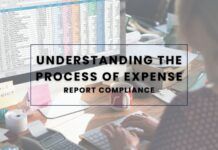
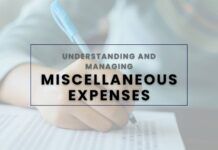






![Why AI Sales Calls Are Making Good Sales Reps Even Better [2025 Guide] ai sales calls](https://cdn-kmjmp.nitrocdn.com/YvtqmrsiHUxqerlSiZgbfzqqTARWTElr/assets/images/optimized/rev-834053b/blog.peakflo.co/wp-content/uploads/2025/09/65168cf6-3001-4733-8cbc-12d5684cf449-218x150.webp)

